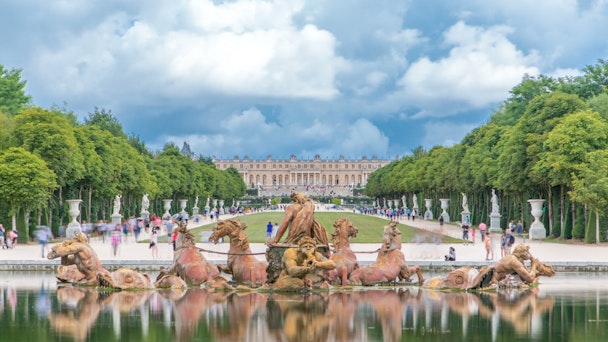Marketing for ‘pre- and post-luxury’ consumers: What you need to know
Ilze Du Toit of specialist luxury marketing agency Relevance gives a historical view of ‘pre- and post-luxury’ consumers: two demographics with a lot of money, but who may not be keen to spend it.

The 'pre- and post-luxury' trends have their roots at Louis XIV's Versailles court, says agency Relevance / Shutterstock
Luxury goods and services have come a long way since Louis XIV, but French aristocrats set the stage for luxury as we know it today.
The king’s court at Versailles was the epitome of extravagance, becoming a center of art, fashion, and extravagant lifestyles and setting the standard for European courts. Inspired by Louis XIV’s court, meanwhile, the French nobility and upper classes spent vast amounts on fashion, art, and luxury items. This gap between the ordinary rich and the opulently rich still informs our understanding of luxury.
Advertisement
The illusion of luxury
Since the ‘King of Couture’ had his moment, wealth has become a relative concept.
Not long ago, everyday people dreamed of becoming millionaires. Today, millionaires are everyday people, everywhere. This is not to say that billionaires and ultra-high-net-worth individuals (UHNWIs) don’t have their place in society but, clearly, the notion of luxury has changed since Louis XIV’s reign.
With access to social media, the lives of the super-rich have been exposed, even to the poorest in society.
Many now believe that the idea of luxury is overexaggerated and overpromoted to entice everyday individuals into aspiring for a lifestyle that may be unattainable. A big part of selling luxury items is selling the idea that high-end items will elevate status or signal wealth.
The term ‘aspirational consumer’ has been used in the luxury market to describe less financially secure consumers who aspire to own luxury items to enhance their status. But as the public (and some everyday millionaires) cotton on to this, the world of luxury can expect a big shift to come.
Advertisement
Pre-luxury vs post-luxury
‘Pre-luxury’ is a conscious decision made by wealthy individuals to reject the societal norm that associates luxury with success.
People who find themselves in this category have either lived in luxury and reverted back to ‘millionaire minimalism’ or have simply never been charmed by lavish lifestyles and luxury items.
In interior design, pre-luxury translates into long-lasting quality and livable functionality – unlike homes that look and feel excessively extravagant. In fashion and art, pre-luxury might take the form of ‘quiet luxury’, with a significant focus on logo-free pieces, neutral tones, and excellent craftsmanship. It’s about having the ability to buy a Ferrari, but choosing not to.
On the other side of the equation, luxury, past a certain point of wealth, becomes ‘post-luxury’. This category of UHNWIs has accumulated so much wealth that they no longer feel the need to signal that wealth to others. These are the silent billionaires of the world, the ones not often seen or spoken about.
Post-luxury consumers may have realized that objects, typically associated with wealth, bring them little to no satisfaction.
Regarding fashion, post-luxury consumers are wearing various styles inspired by different eras, and most are happy to replace one trend with another quickly because the cost of doing so is low.
Social media has increased the exposure of small businesses and unique retailers (and UHNWIs) are taking note. Instead of chasing status, they are chasing impact and purpose. At this point in wealth, consumers have the financial freedom to buy the entire Ferrari corporation, and driving a Ferrari to signal their wealth becomes irrelevant.
Suggested newsletters for you
How do pre- and post-luxury affect luxury marketing and e-commerce?
Slick luxury marketing campaigns are a thing of the past.
Many luxury brands are stuck, promising consumers that the sense of status and belonging they crave is attainable through their product or service. They over-promise and under-deliver, which chases away UHNW clientele – and pushes them straight into the open arms of smaller startup businesses, to whom loyalty and quality are more important.
Luxury branding should not, therefore, focus on what the product can provide, but rather on the story behind that product. What is the purpose of a specific luxury item? How will it impact society, or your life? What type of emotion does it evoke? Is it sustainable? How does this product tie into the brand’s story, vision, and goals?
Although the focus shouldn’t be on the products themselves, the sense of exclusivity should still be on marketers’ minds. If it’s something that the ultra-rich can get anywhere, you need to provide a service that goes beyond the product, something that can’t be found elsewhere, something that money can’t buy. This could take the form of exclusive access to places and experiences, incomparable service, or memorable experiences that bring joy to clients.
Content by The Drum Network member:

Relevance
Relevance is a strategic and creative digital marketing agency specialising in profiling and targeting Ultra-High-Net-Worth-Individuals for the world's most exclusive...
Find out more
